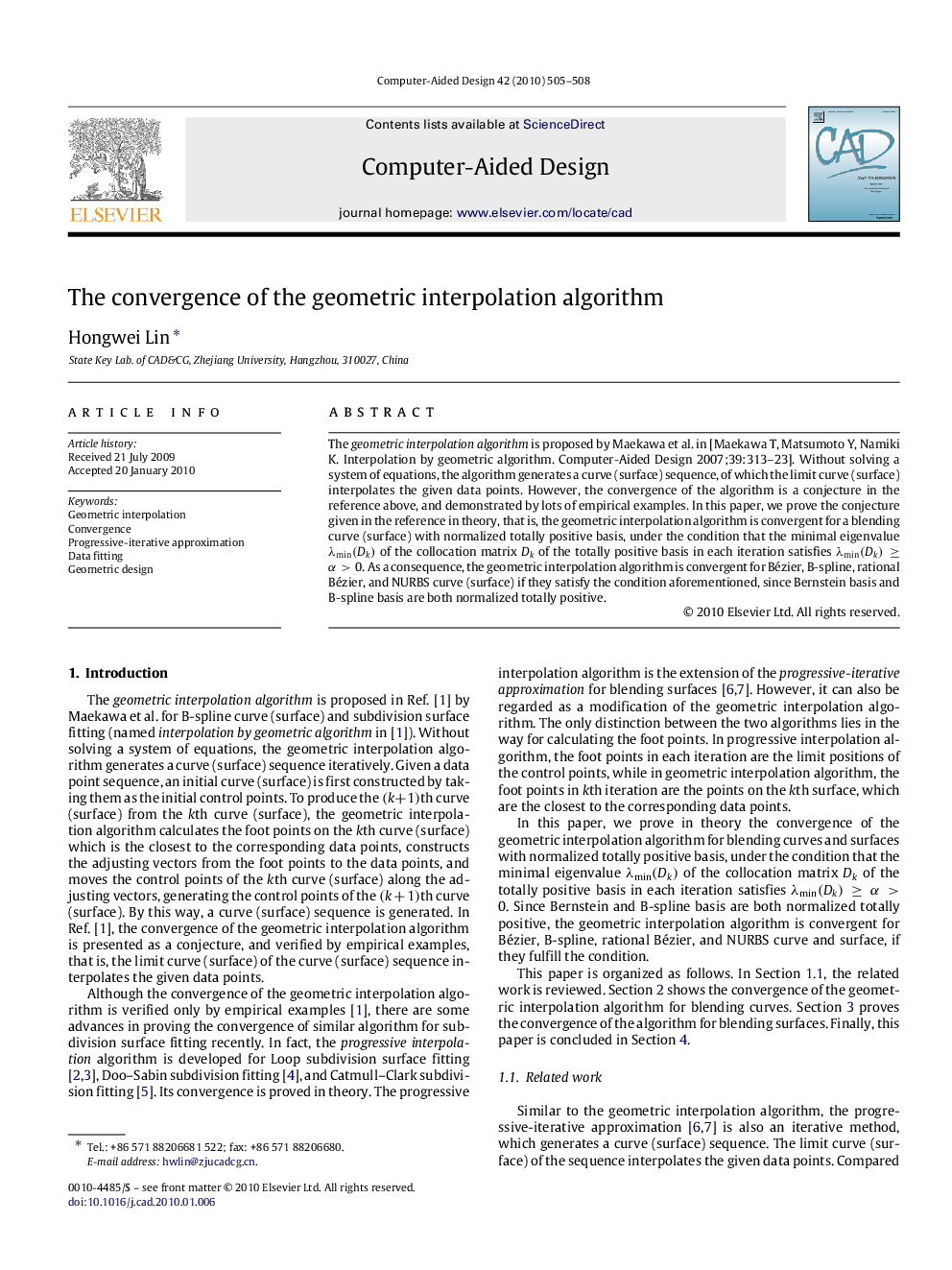| Article ID | Journal | Published Year | Pages | File Type |
|---|---|---|---|---|
| 440323 | Computer-Aided Design | 2010 | 4 Pages |
The geometric interpolation algorithm is proposed by Maekawa et al. in [Maekawa T, Matsumoto Y, Namiki K. Interpolation by geometric algorithm. Computer-Aided Design 2007;39:313–23]. Without solving a system of equations, the algorithm generates a curve (surface) sequence, of which the limit curve (surface) interpolates the given data points. However, the convergence of the algorithm is a conjecture in the reference above, and demonstrated by lots of empirical examples. In this paper, we prove the conjecture given in the reference in theory, that is, the geometric interpolation algorithm is convergent for a blending curve (surface) with normalized totally positive basis, under the condition that the minimal eigenvalue λmin(Dk) of the collocation matrix DkDk of the totally positive basis in each iteration satisfies λmin(Dk)≥α>0. As a consequence, the geometric interpolation algorithm is convergent for Bézier, B-spline, rational Bézier, and NURBS curve (surface) if they satisfy the condition aforementioned, since Bernstein basis and B-spline basis are both normalized totally positive.
